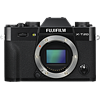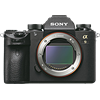Main
Model
Price
Advantages
launch
Announced
Body type
Camera subcategory
Sensor
Effective pixels
Max resolution
Sensor size
Sensor type
Processor
Image ratio w:h
Sensor photo detectors
Image
ISO
Boosted ISO (minimum)
Boosted ISO (maximum)
White balance presets
Custom white balance
Image stabilization
Uncompressed format
Image stabilization notes
JPEG quality levels
Photography features
Minimum shutter speed
Maximum shutter speed
Maximum shutter speed (electronic)
Aperture priority
Shutter priority
Manual exposure mode
Built-in flash
Flash range
External flash
Flash modes
Continuous drive
Self-timer
Metering modes
Exposure compensation
AE Bracketing
WB Bracketing
Subject / scene modes
Screen / viewfinder
Articulated LCD
Screen size
Screen dots
Touch screen
Screen type
Live view
Viewfinder type
Viewfinder coverage
Viewfinder magnification
Viewfinder resolution
Videography features
Resolutions
File Format
Microphone
Speaker
Optics & Focus
Autofocus
Manual focus
Number of focus points
Lens mount
Focal length multiplier
Physical
Weight (inc. batteries)
Dimensions
Environmentally sealed
Battery
Battery details
Battery Life (CIPA)
Storage
Storage types
Connectivity
USB
HDMI
Microphone port
Headphone port
Wireless
Wireless notes
Remote control
Other features
Orientation sensor
Timelapse recording
GPS
GPS notes
Samples
Videos
Summary
The Sony Alpha a9 is produced with bigger sensor than the Fujifilm X-T20: Full frame (35.6 x 23.8 mm) versus APS-C (23.6 x 15.6 mm). This is the most significant specification of this model as large sensor allows you to take photos of the higher quality. The Sony Alpha a9 has a wider ISO range of 100-51200 than 200-12800 ISO range of the Fujifilm X-T20. Such ISO range allow you to take good quality photos in more difficult situations. The Sony Alpha a9 has more number of white balance presets - 10. It gives you more control over colour. The Sony Alpha a9 has image stabilization which will allow the photographer to take clearer photos indoors without using a tripod. The Sony Alpha a9 offers more focus points than the Fujifilm X-T20: 693 vs 325. More focus points means less risk of losing focus lock when tracking a moving object.
The Sony Alpha a9 screen is better as it offers more screen dots 1,440,000 in compare to 920,000 dots of the Fujifilm X-T20 screen. The higher dot count screen is better for reviewing pictures on your camera.
The Fujifilm X-T20 is produced with built-in flash. The Sony Alpha a9 battery life is better in compare to the Fujifilm X-T20 battery life. In accordance with CIPA standards the photographer will be able to make 650 shots with the Alpha a9 and only 350 with the X-T20. The Fujifilm X-T20 weighs 383g which is 290g lighter than the weight of the Sony Alpha a9. The Fujifilm X-T20 can utilize optional accessory GPS devices. Recording GPS data can be convenient if the camera owner is a traveller, to be able to check the photo metadata and find out exactly where a picture was taken.
Taking into account the above-mentioned differences the Sony Alpha a9 is the best buy. Get the lowest price on Amazon.


